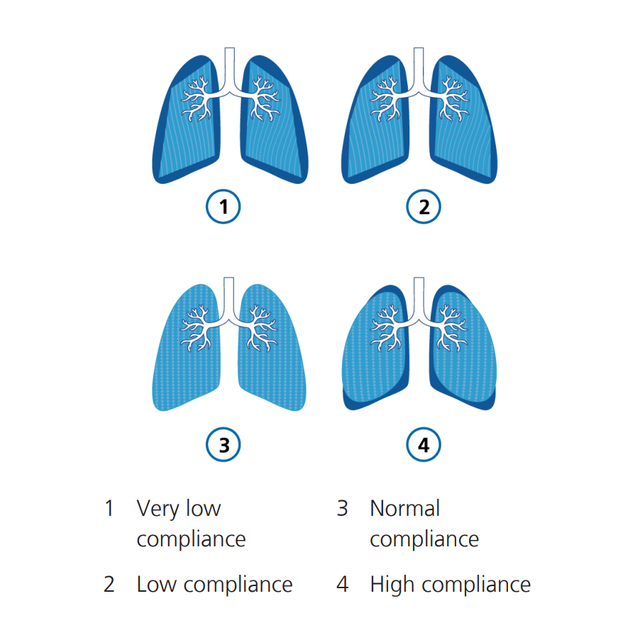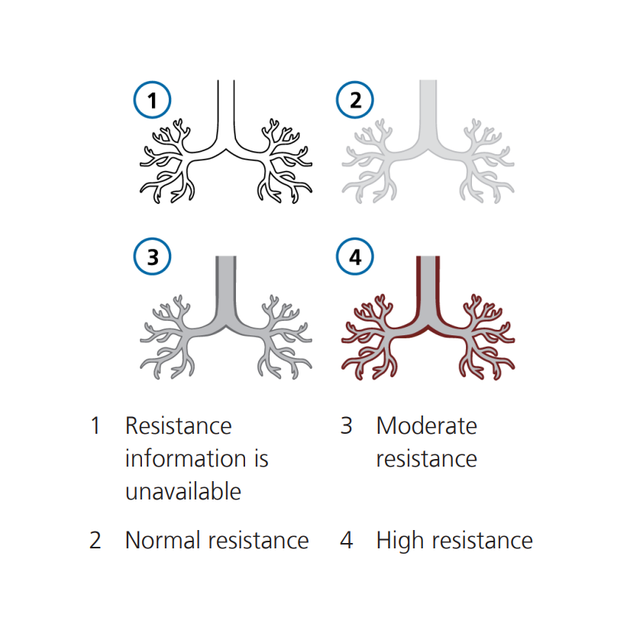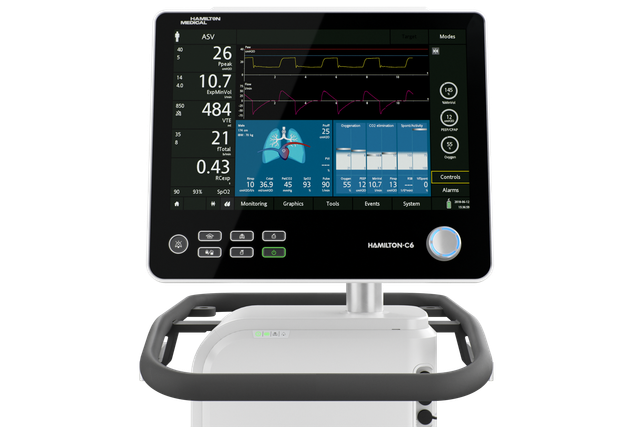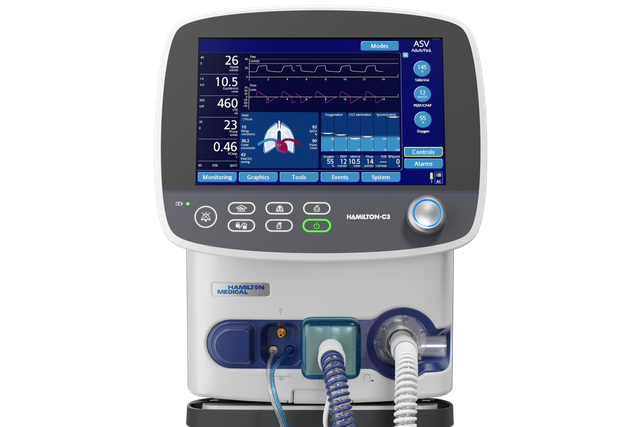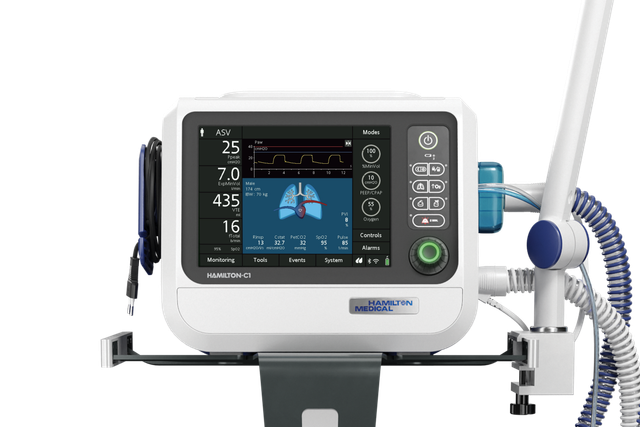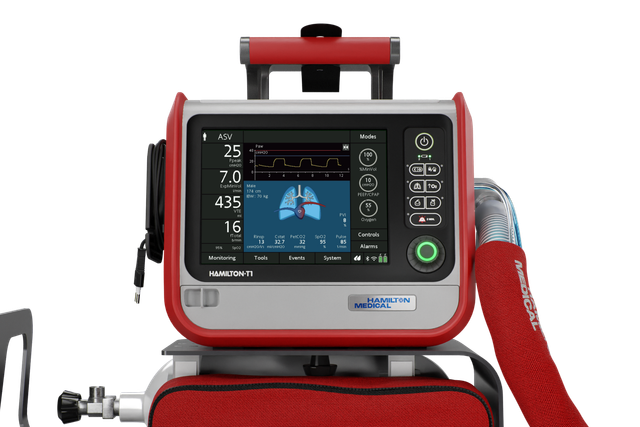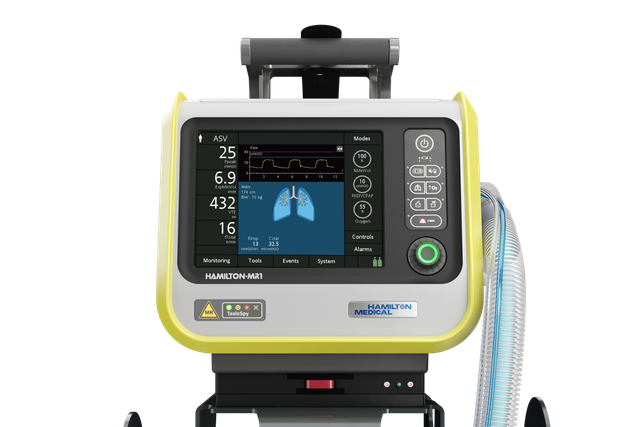
Notre mission. Une interface pour tous les ventilateurs
L'interface utilisateur fonctionne de la même manière sur tous nos ventilateurs et ce, indépendamment de son utilisation en USI, en salle d'examen IRM ou lors de déplacements.
Notre Ventilation Cockpit intègre des données complexes qui sont représentées visuellement de façon intuitive.
L'inspiration. Représentation graphique de données complexes
Une étude a montré que les affichages de chiffres et de formes d'ondes uniquement ne sont pas suffisants pour fournir une aide optimale aux médecins (
Notre Ventilation Cockpit s'inspire du cockpit des avions dans lesquels des données complexes sont intégrées et représentées visuellement de façon simplifiée.
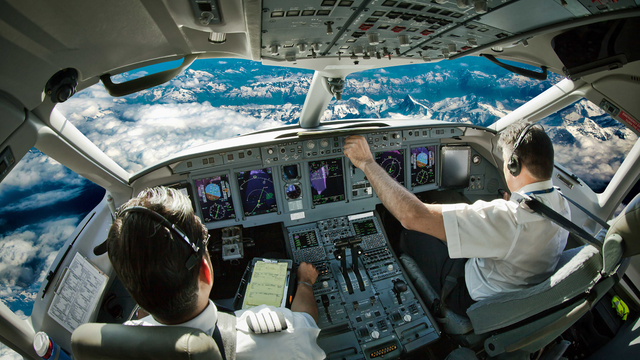
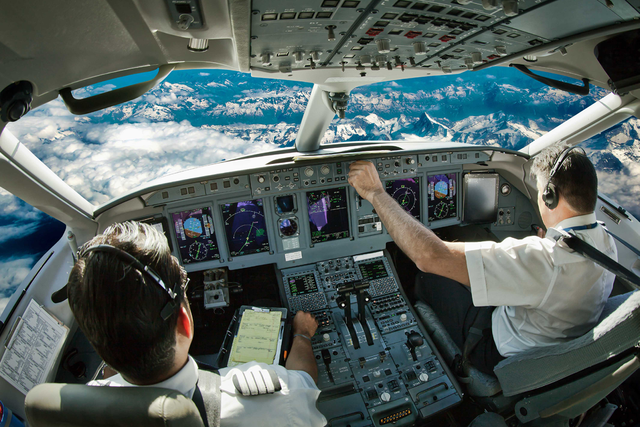
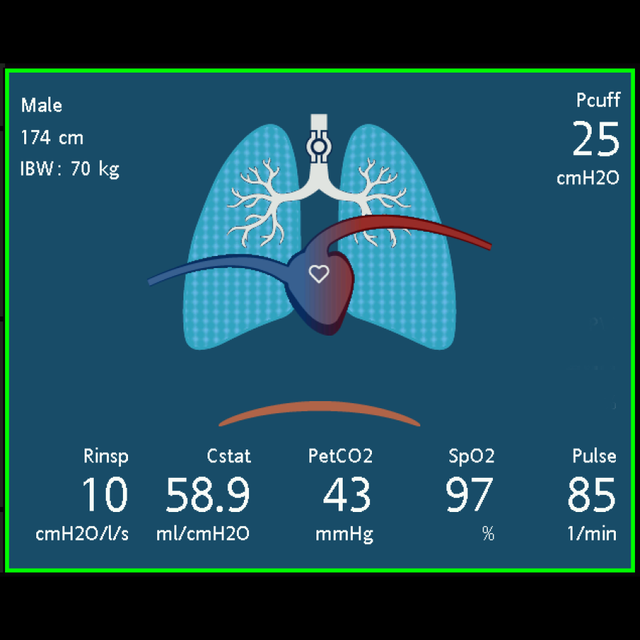
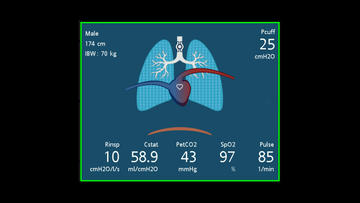
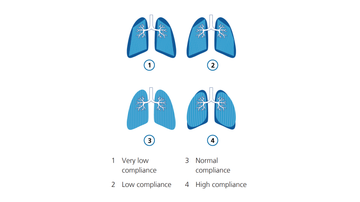
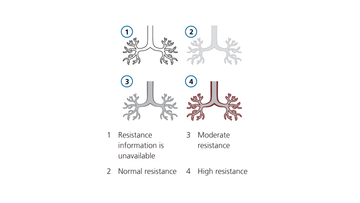
Mieux qu'un long discours. Le panneau Poumon dynamique
Le panneau Poumon dynamique visualise les données de monitorage ci‑dessous en temps réel. Si toutes les valeurs sont normales, le panneau est encadré en vert.
Les poumons se distendent et se rétractent en synchronisation avec les cycles réels, en fonction du signal du capteur de débit proximal. Les dimensions du poumon représenté sont proportionnelles aux valeurs attendues en fonction de la taille du patient.
Le diaphragme animé sous les poumons indique l'activité spontanée du patient.
Si le contrôleur intégré de pression du ballonnet IntelliCuff est installé et actif (
L'arbre bronchique représente la résistance à chaque cycle proportionnellement à la taille du patient. La couleur de l'arbre bronchique indique le degré relatif de résistance.
La valeur numérique s’affiche également.
La forme des poumons varie avec la compliance (C Stat) à chaque cycle proportionnellement à la taille du patient. La valeur numérique s’affiche également.
Si l'option SpO2 (
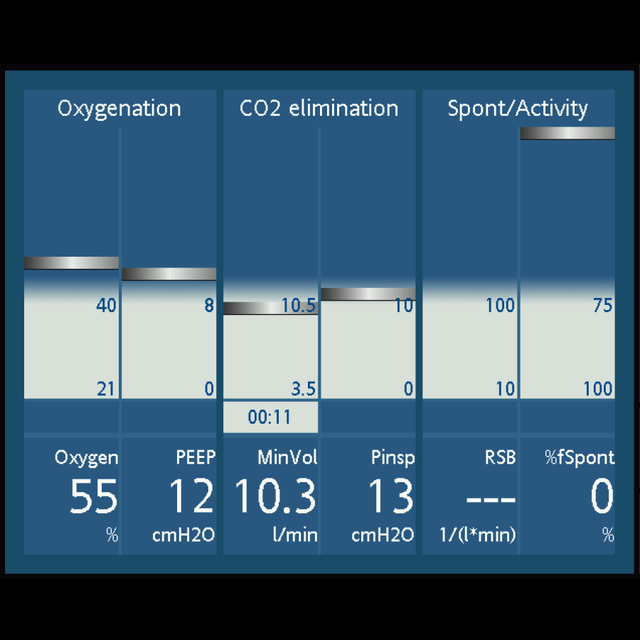
Prêt pour le sevrage ? Le panneau État Vent
Le panneau État Vent affiche six paramètres relatifs à la dépendance du patient au ventilateur, notamment l’oxygénation, l’élimination du CO2 et l’activité du patient.
Une réglette variable à l'intérieur de la colonne représente la valeur d'un paramètre donné à chaque cycle. Lorsque cette réglette pénètre dans la zone de sevrage grise, un chronomètre démarre et indique le temps écoulé dans la zone de sevrage pour ce paramètre.
Lorsque toutes les valeurs se trouvent dans la zone de sevrage, le cadre entourant le panneau devient vert, indiquant que des épreuves de ventilation spontanée peuvent être envisagées.

Témoignages de clients
D'après mon expérience, la fonction Poumon dynamique est très utile car nous ne sommes pas tous toujours en mesure d'interpréter les chiffres, en particulier les thérapeutes inexpérimentés. Mais ils peuvent comprendre les images.
Craig Jolly
Coordinateur de la formation clinique
University Medical Center, Lubbock (Texas), États‑Unis
Disponibilité
Le Ventilation Cockpit est une fonction standard équipant tous nos ventilateurs de soins intensifs.
Notes en bas de page
- A. Disponible en système intégré pour le HAMILTON‑C6/G5/S1 et en système autonome pour le HAMILTON‑C3.
- B. Non disponible sur le HAMILTON‑MR1


